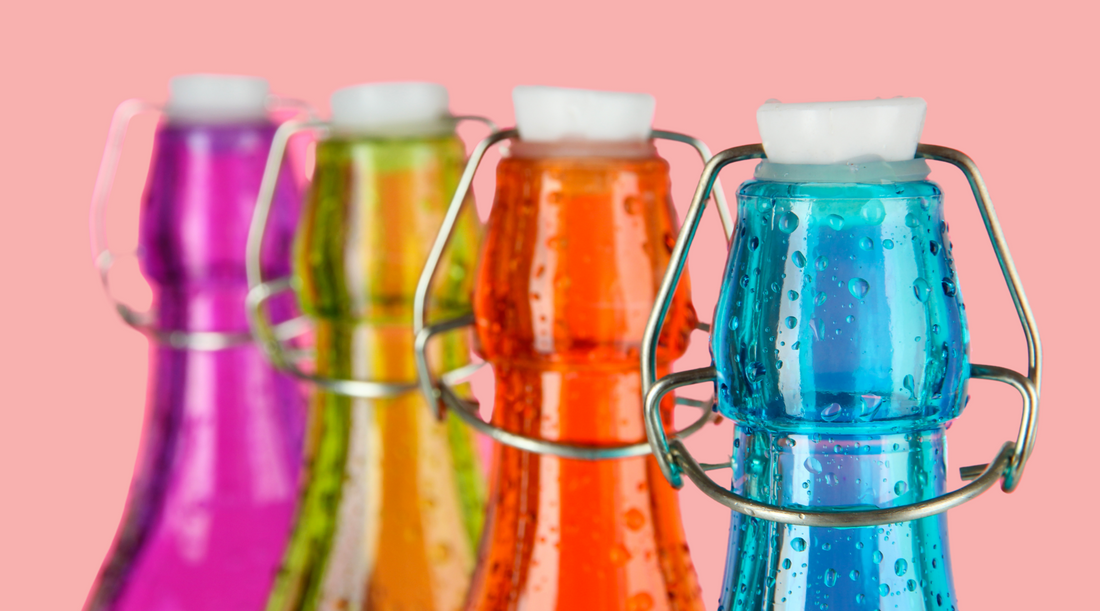Breast milk can come in an array of different colors, and for the most part, there’s nothing to worry about when it does.
Regardless of color, if you’re leaking breast milk and want to check out some leakproof solutions, be sure to check out some here.
To get you everything you need to know about different breast milk colors and their meaning, we’ve talked with International Board-Certified Lactation Consultant extraordinaire and Registered Nurse, Leslie Owens, to get the 411 on all things color when it comes to your breast milk.
Leslie, can you tell us why breast milk comes in different colors?
“Breast milk is usually some version of white, yellowish (especially when frozen), bluish, or sometimes brownish. Eating certain foods/ingesting certain food dyes, and certain medication can change it to various colors of the rainbow.”
Is there such a thing as a color for “healthy” breast milk?
“No, this is a common misconception and many moms especially believe if their milk looks clearish that they have “skim milk,” and it isn’t good enough for their baby. ALL breast milk is good milk and designed to be exactly what your baby needs.”
Why is my breast milk greenish? Is there anything I should do to address green breast milk?
“Algae, kelp, green drinks, iron supplements, and multivitamins are known to sometimes give breast milk a green tint. There is nothing to do or worry about with it. Keep on keeping on!”
Why is my breast milk yellow? Is there anything I should do to address yellow milk?
“Your early milk that your body produces in the second trimester is called colostrum and is commonly a yellow color, hence why you may have heard breast milk being called “liquid gold!”. Once milk has transitioned to mature (by two weeks), you may find that stored milk that has been frozen has a yellow tint to it. Foods rich in beta carotene, such as carrots and squash may also turn milk yellowish. There is nothing special you need to do other than admire your fantastic work!”
Why is my breast milk pink? Is there anything I should do to address pink breast milk?
“Pink milk can be caused by a small amount of blood getting into the milk and is not harmful to baby. This could be from red foods/food dyes, nipple damage, busted capillaries in the breasts, or what the lactation world calls “rusty pipe” syndrome where the increased blood volume happening with the changes in the breasts (when milk supply is being established) causes a small amount of blood to leak into the milk. This usually resolves in a few days’ time and if it does not or appears to have a large amount of blood, contact your provider to be on the safe side, as there are some very rare medical conditions that may need to be ruled out.”
Why is my breast milk brown? Is there anything I should do to address brown breast milk?
“Brown breast milk is usually a variation of rusty pipe syndrome as discussed above. It should resolve in a few days without any intervention.”
Why is my breast milk orange? Is there anything I should do to address orange breast milk?
“Orange soda, gelatin, and beta carotene could cause orange as a variation of yellow. There is no need to do anything special.”
Why is my breast milk grey? Is there anything I should do to address grey breast milk?
“You may notice that when pumping the milk, that what comes out first is a clearish or bluish greyish color because there is more foremilk in the beginning of a feeding. It’s normal/to be expected, and there is nothing special you need to do.”
Why is my breast milk black? Is there anything I should do to address black breast milk?
“The production of black breast milk could be some residual aka “old” blood. It is also linked to an antibiotic called Minocin (minocycline). There is nothing special to be done.”
Why is my breast milk almost clear? Is there anything I should do to address almost clear breast milk?
“It’s no reason for concern, but if you feel the breast milk is mostly coming out clear, you can do what I like to call a” milk shake” to help mix up the foremilk and hindmilk so there will be more fatty hindmilk that comes out. This is literally just shaking your breasts around for a few seconds. I know it sounds crazy, but it works!”
You’re amazing, Leslie. Do you have any final words for women struggling with their breast milk being a different color?
“The good news is, there is normally no cause for concern, and we just have to keep in mind that unless you pump the milk, you never know what it looks like. Don’t drive yourself crazy worrying if the color is okay. 99.9 times out of 100, it is just fine. Be proud of yourself for giving your baby the best start at life, and don’t sweat the small stuff!”
Love Leslie Owens and want to check out more about her?
Visit her website here.

